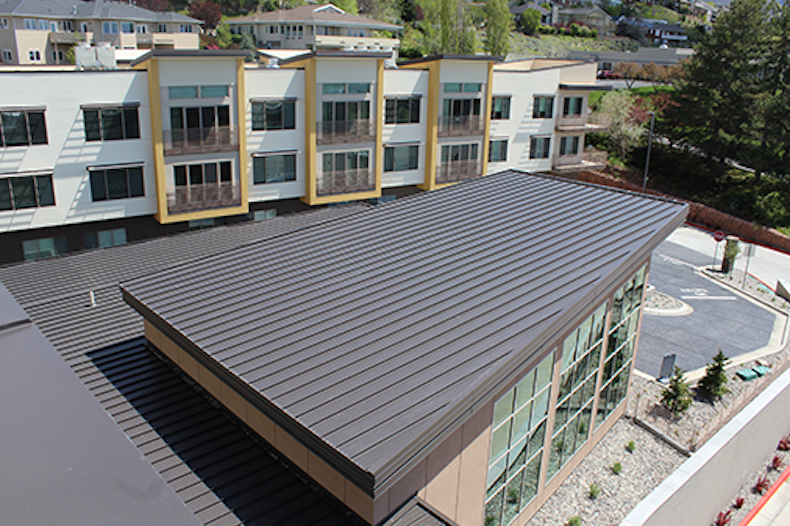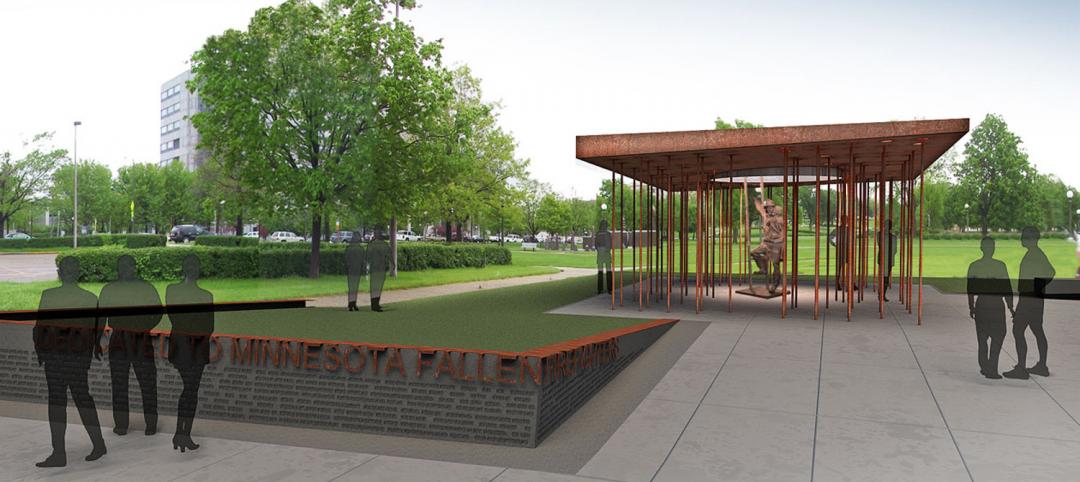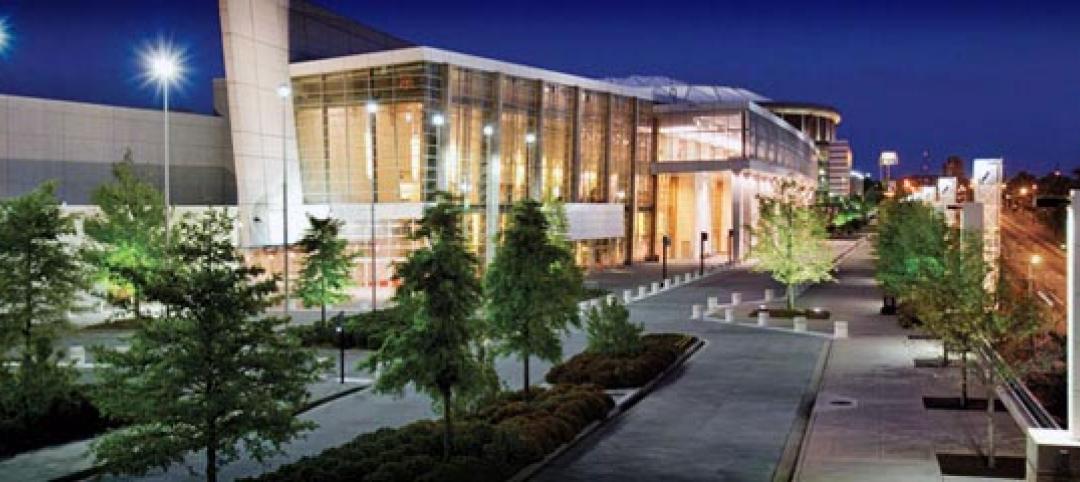Many large, commercial, low-rise buildings such as warehouses, big box retail stores, agriculture structures, aviation facilities, etc. often don’t benefit from steeply-sloped roofs the way residences and small commercial buildings might. This is because a steep roof slope would add unwanted height and uneccesary construction cost.
Instead, these buildings are more appropriately built with so-called “flat roofs.” This is actually is a misnomer since the roofs are, in fact, “low-slope roofs” which the the National Roofing Contractors Association (NRCA) defines as any roof with “a slope at or less than 3:12.” Anything steeper is considered a “high-slope roof.” With this in mind, let’s look at some key points to consider when designing and constructing a low-slope roof.
Low-Slope Roofing Materials
When it comes to selecting low-slope roofing products, there are generally three fundamental choices:
- Asphalt/ Bituminuous Products: The traditional commercial roofing norm for many years, the use of asphalt/bituminous products has dwindled as newer, more appealing options have emerged.
- Flexible Membrane Roofing: This roofing material can be made from a variety of types of plastic/polymer based materials (commonly known as EPDM, TPO, PVC, or others). Rolls of the selected membrane are laid out on the roof structure and secured in place either with properly spaced mechanical fasteners (screws with large washers) or with a continuous layer of adhesive.
- Metal Roofing: Sometimes overlooked, metal roofing is suitable for different roof slopes. Many metal roofs that use a standing-seam system are rated for use on roofs with a pitch as low as ½:12.
When considering which type of roofing material to use for a building project, there are a number of significant differences that illustrate why metal roofing is often preferred.
Engineered For Superior Performance
Standing-seam metal roofing is designed and engineered specifically for use on low-slope roofs as it meets a number of performance requirements:
- Water resistance: Water and other forms of precipitation don’t penetrate through metal and or through properly formed standing seams where the metal panels are joined. That is the reason they can tolerate such low slopes, allowing the water to drain away slowly and predictably without leakage.
- Rigidity: The rigid nature of metal means that the opportunity for ponding (i.e. standing water on a roof) is eliminated. This is not always the case with asphalt/bituminous or membrane roofing systems.
- Drainage: Water on a metal roof typically flows to the roof’s edge where it meets with gutters and downspouts that carry the water away from the building. Other roofing systems rely on interior drainage piped inside the building. This takes up space and has the potential to leak water inside the building and cause damage.
- Wind Resistance: Standardized uplift testing of metal roofing shows that it can perform as well or even better than membrane systems that are either mechanically-fastened or fully-adhered.
- Durability: Because of it’s engineered design and use of high quality coatings, the most cited advantage of metal roofing is its long-term strength and durability. That translates to a longer roofing life—50 years or more compared to the other two roofing types that are only rated for 20 or 30 years.
- Puncture Resistance: Low-slope roofing tends to get walked on and may also take direct abuse from hail and other hazards. Metal roofing is more resistant to punctures than asphalt/bituminous or membrane roofing and better able to tolerate foot traffic and hail without getting punctured.
- Construction/ Installation Ease: Metal roofing panels are sized and pre-fabricated to match the building where they are being installed. That typically means it takes less time in the field to place and install metal roofing compared to other types of roofing. Further, installation of metal panels is not restricted by temperature or other weather conditions since they can easily tolerate a wide range of either and still perform as intended. On low-slope roofs, their surface is also easy to walk on without risking falls or other safety hazards.
Cost-Effectiveness
Using metal roofing on low-slope roof systems has been shown to be quite cost effective in a number of ways:
- Fewer labor hours as a result of the ease of installation saves money during construction.
- Competitive material costs, particularly if the metal roofing is part of a total metal building package from a single manufacturer.
- Minimal maintenance requirements and aversion to rusting, mold growth and decay that save the building owner money over time.
This all adds up to a very favorable life-cycle cost.
Considering the performance, cost and life-cycle benefits of metal roofing panels, this material should always be considered as a viable option for low-slope roofing systems. Metal roofing manufacturers like MBCI can not only help you select the right metal roofing products, but can also provide the information and resources needed to ensure they’re installed properly.
View examples of low-slope metal roofing projects and contact your local MBCI representative to start your project today.
Related Stories
| Feb 26, 2013
CRSI releases new technical note on stainless steel reinforcing bars
The Concrete Reinforcing Steel Institute (CRSI) has released a new technical note, Frequently Asked Questions (FAQ) about Stainless Steel Reinforcing Bars, to its online collection.
| Jun 1, 2012
New BD+C University Course on Insulated Metal Panels available
By completing this course, you earn 1.0 HSW/SD AIA Learning Units.
| May 29, 2012
Reconstruction Awards Entry Information
Download a PDF of the Entry Information at the bottom of this page.
| May 24, 2012
2012 Reconstruction Awards Entry Form
Download a PDF of the Entry Form at the bottom of this page.
| Mar 7, 2012
LEO A DALY selected to design Minnesota Fallen Firefighters Memorial
The bronze, figurative sculpture of a firefighter rescuing a child, which is currently on display at the Minneapolis/St. Paul International Airport, is lit by natural light through a circular void in the monolith.
| Jan 9, 2012
METALCON International 2012 announced
METALCON 2012 is scheduled for Oct. 9-11 at the Donald E Stephens Convention Center, Hall A, Rosemont, Ill.
| Oct 18, 2011
Michel Bruneau wins 2012 AISC T.R. Higgins Award
The AISC T.R. Higgins Lectureship Award is presented annually by the American Institute of Steel Construction (AISC) and recognizes an outstanding lecturer and author whose technical paper(s) are considered an outstanding contribution to the engineering literature on fabricated structural steel.
| Apr 12, 2011
Metal cladding: Enhancing design with single-skin panels, MCMs, and IMPs
Single-skin metal panels, metal composite panels, and insulated metal panels can add both aesthetic and functional value to your projects, if you use them correctly.
| Apr 5, 2011
SSPC, AISC announce joint standard for paint shop certification
SSPC: The Society for Protective Coatings and the American Institute of Steel Construction (AISC) are pleased to announce a joint certification standard for shop application of protective coatings. The standard, "Certification Standard for Shop Application of Complex Protective Coating Systems," describes requirements for certification of firms that shop apply complex painting systems.














